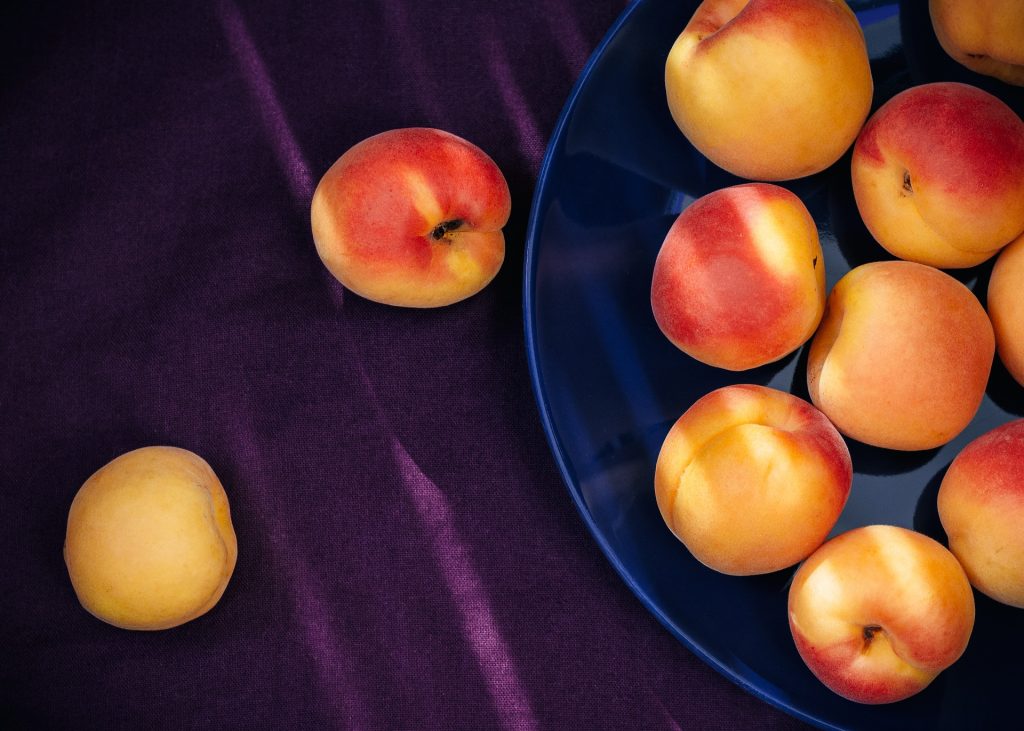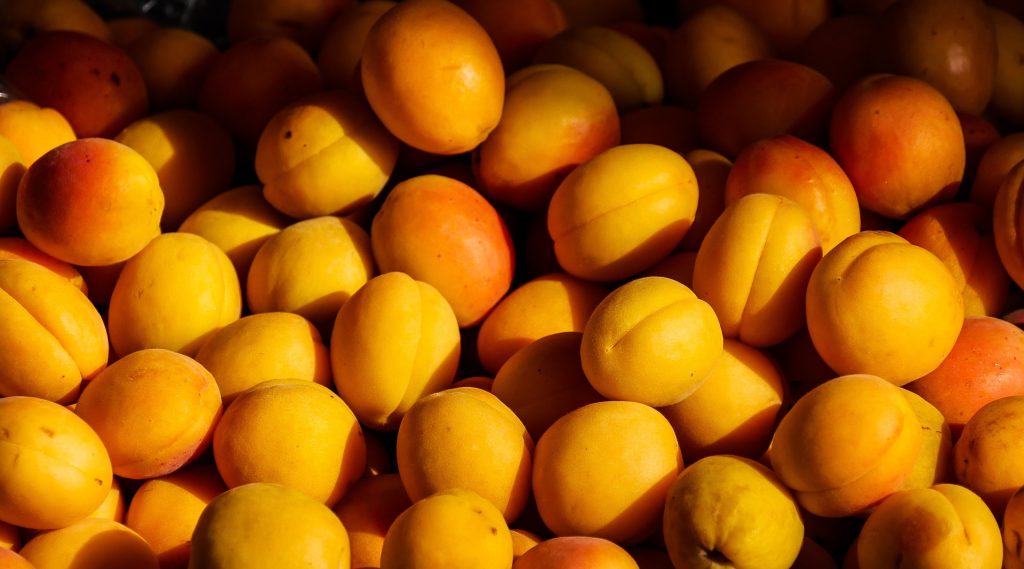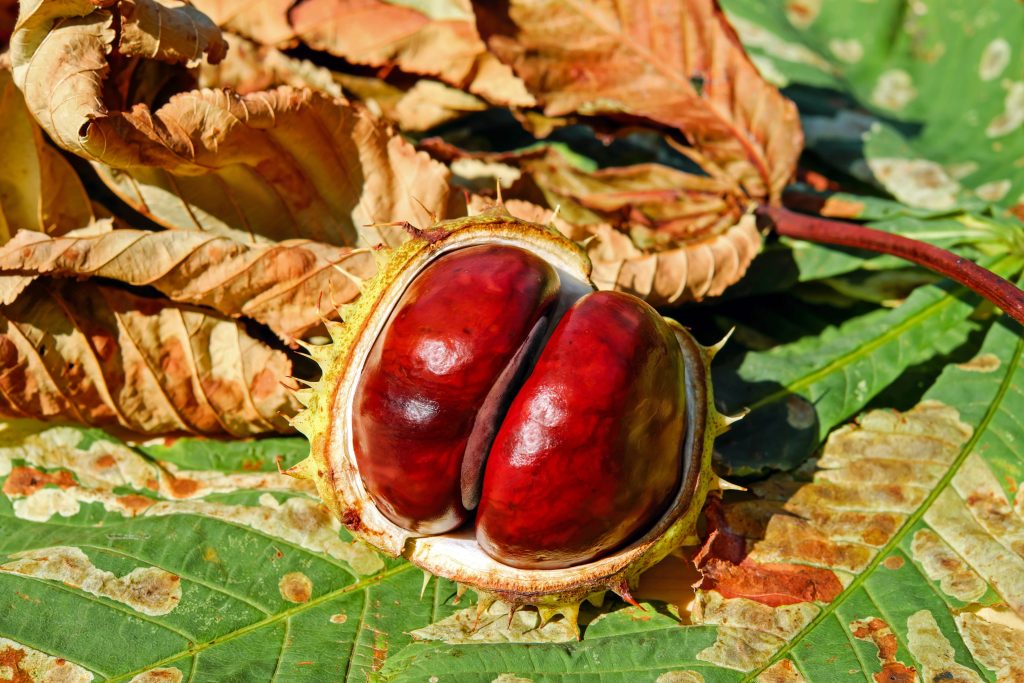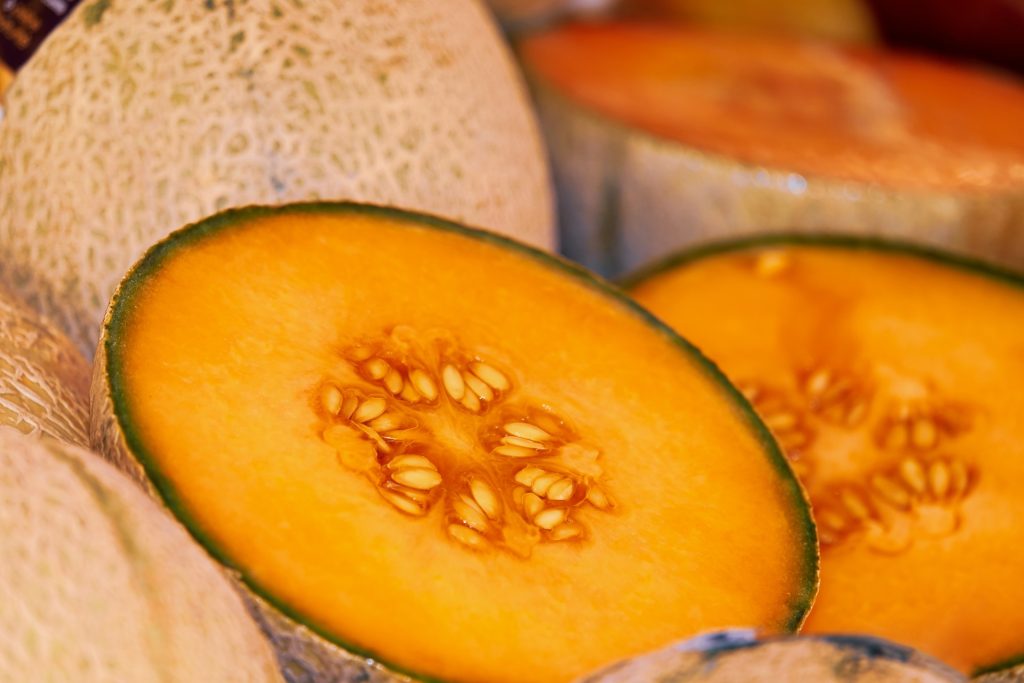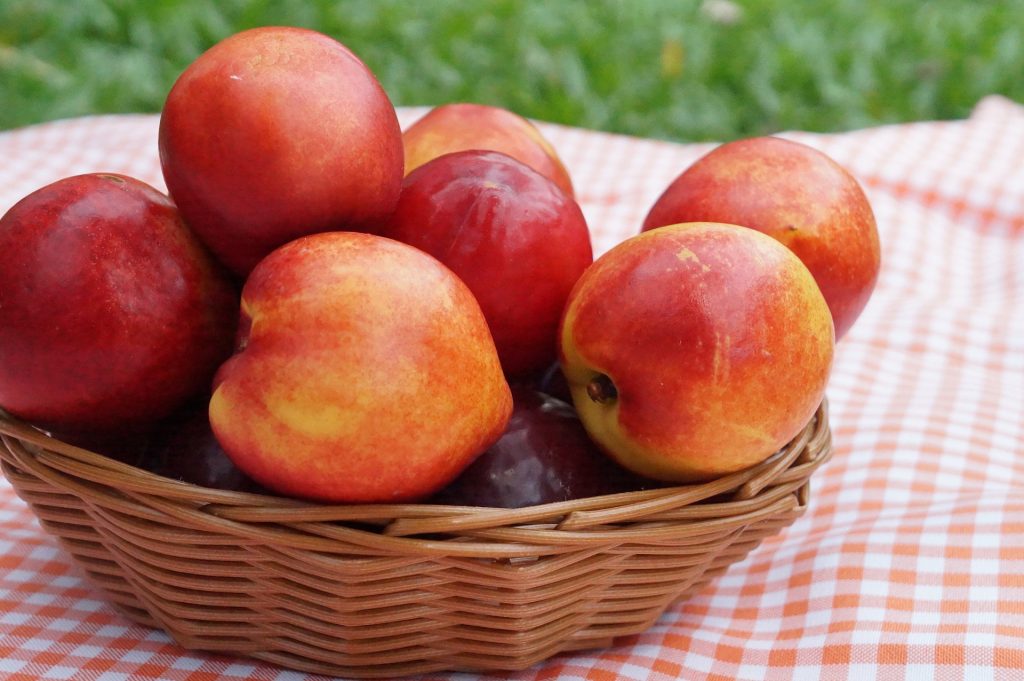Blog
Find articles that matter. From trading to shipping, trends to valuable goods, you can deep dive into everything you need.
Latest Posts
Blog
Carpet has been one of the most important household needs of mankind for centuries. On the other hand, it is the Turks who give each space a distinctive ambiance through the carpets that adorn the tiles and parquet. World-famous Turkish carpets and kilims reflect a great history.
It is thought that the origin of Turkish carpets is based on the Central Asian Turks. Carpets woven with motifs with many meanings are still very important today. When carpets are mentioned, the definition of transhumance comes to mind. The Turks, who lived in a nomadic state for a long time, woven carpets to keep their places warmer and to remember events as a memory.
To meet the ground cover requirements of people in the laying of houses, they first discovered the rug by interlacing the wool threads. It is thought that they found the carpet by knotting short woolen threads between these threads. The Central Asian Turks, who spread to every corner of the world during the migration times, also spread the carpets that reflect their memories, pain, and happiness to the world.
Although Turkish carpet culture has similar characteristics everywhere in terms of general characteristics, it varies according to the region or climate. Techniques, patterns, and even colors are shaped by culture. For example, while Turkish carpets were made of thicker wool in colder places in the past, Turks also weaved finer carpets in warm places where they migrated.
These carpets are in such demand even today that tourists usually take carpets, rugs, or woven wall coverings to their countries as gifts. So why are these carpets considered an art?
Turkish Carpet Art
Pazyryk Carpet
The oldest known carpet in history was unearthed by the archaeologist Rudenko around Pazyryk in the Altai mountains. This carpet, which was removed from the glaciers during the research, was named after the region where it was found. This carpet, which is magnificently woven in a wide variety of colors, was first shown to the public in 1953.
The exact chronological date of the Pazirik Carpet is still controversial. By looking at details such as mummified items, the dead, and burial styles in the kurgan found with the carpet, historians guess that this carpet is based on the Asian Huns. The fact that even the motifs of this carpet, which are thought to date back to the 3rd century, can still be examined, shows how artistic its quality is.
East Turkestan Carpets
About 45 years before the Pazirik Carpet was discovered, Hungarian-British archaeologist Aurel Stein found knotted carpet pieces from the 3rd and 4th centuries in Lou-Lan, west of East Turkestan's Lop lake.
These are unpainted wool-woven nodes that are displayed at the British Museum and the New Delhi Museum in India. Some parts have matte-colored flowers, like blue, brown, and diamond patterns.
Abbasid Period Carpets
It is known that the knot technique was brought to the West at the time when the Abbasid dynasty, which ruled the Islamic State, founded the city of Samarra. Carpet samples found in excavations thought to belong to the Abbasid Period are exhibited at the Cairo Museum, the Gotheburg Röhss Museum in Sweden, and the Stockholm National Museum.
Furthermore, one of the two Kufic inscriptions found in the Cairo Arab Museum is thought to have been woven in 818. The third piece with the Kufic inscription is on display at the Washington Textile Museum.
Seljuk Period Carpets
With the conquest of Anatolia, the culture of the Turks is both spread and diversified. It is not thought to be a clear example of the Seljuk carpet in history. But in 1905, the Explorer Martin Konya gave his book to carpet figures in the Alaaddin Mosque.
While animal figures are not known to have been used in the late Seljuk period, a carpet thought to be Tibetan was on display at the New York Metropolitan Museum. It became a little more definite with the work shared by Martin, in which the techniques in this carpet are identified with the Seljuk Period. Although it is still not certain, it is stated that Seljuk carpets date back to the 13th century and there are periods when animal figures are found. Seljuk carpets are among the carpets that are thought to show the most developmental stage.
Ottoman Carpets
The techniques and motifs of Anatolian carpets underwent a significant change following the Fatih era in 1451. Ottoman carpets dating to the 16th century often feature exaggerated plant designs. Carpets started to be separated into two categories in the 17th century: Uşak Carpets and Palace Carpets. Uşak carpets, which started to be produced in the 16th century, are among the most exported carpets to Europe.
On the other hand, Palace Carpets are an interpretation choice that surfaced in the final decades of the 16th century. This carpet is dominated by the naturalistic leaf and blossom designs that were inspired by Ottoman art from the 16th century. These priceless carpets were soft as velvet and were woven with luxury.
Carpets are constantly improving. II in 1881. Abdülhamit has set up 100 carpet stalls. So the world-famous Hereke carpets began to touch.
The production of traditional carpets is still going on in the Konya, Kayseri, Sivas, and Karşehir districts. Additionally, the carpets made in Western Anatolia's Isparta, Fethiye, Balkesir, Uşak, Bergama, Kula, Milas, and Canakkale are quite well known. Studies for the preservation of the traditional Turkish carpet art in the regions of Kars and Erzurum are ongoing in Eastern Anatolia.
The Most Famous Turkish Motifs
There are more than 20 motifs in Turkish carpet motifs. Each has its meaning and message. Here are the five most used motifs:
Scorpion: With this motif meaning death, nomadic Turks believed that they were protecting themselves from death and evil.
Abundance: The fertility motif is the name of many groups. Many motif shapes, from trees to fruits, symbolize fertility. It is also thought to be a symbol of femininity.
Bukağı: This motif, named after the bukağı word used to prevent the horses from escaping, symbolizes devotion. It represents the devotion of lovers who love each other. In the old days, young girls used to show their love in this motif.
Hand/ Finger/ Comb: The comb is supposed to symbolize fertility, the finger is thought to be a talisman, and the hand is thought to symbolize fertility. These motifs, which are frequently employed together, convey an efficiency that will not be compromised by their combination and that should remain constant.
Eye and Waterway: The waterway motif, which reflects nobility and virtue, is often used together with the eye motif, which is thought to protect from the evil eye.
Customs clearance is an integral part of import and export. So, if international trade is part of your business, you should be familiar with customs clearance. If you are exporting or importing, you will need various documents for customs clearance. These documents must be complete for the process to run smoothly. In this article, we have explained in detail the documents required for customs clearance.
What is Customs Clearance?
Before detailing the required documents, it is useful to explain what customs clearance is. Customs clearance is the process of bringing items through the customs authorities. The purpose of customs clearance is to ease the transportation of the shipment. Information about the parties and consignments for import and export are necessary for customs clearance. All commercial shipments require customs clearance. Thus, customs clearance is necessary regardless of whether you are exporting or importing.
Customs clearance is a necessary procedure for imports and exports. After the clearance of the shipment, the sender needs to provide certain documents. After the shipment's approval, the shipper provides documents about the payment of customs duties and processing confirmation of the shipment. There are electronic or physical documents in the customs clearance process. This process enables the determination of taxes and duties. Customs clearance becomes simpler if a customs broker is involved. A customs broker is an intermediary for importers. He helps importers with their customs business transactions.
Required Documents
The documents required for customs clearance may vary depending on the type of goods. Also, documents may vary depending on the country of origin and the destination of the cargo. Yet, there are some general documents that the parties must prepare. These documents differ in export and import processes.
Export License
Governments provide export licenses to exporters. This document is an approval for the export of a certain quantity of products to a particular country.
Import License
Governments provide import licenses to importers. With this document, the government allows certain items to enter its territory.
Packing List
The packing list details the contents of each package. Packages can be in the form of boxes or pallets. The list contains details about the weights and dimensions of the items in the packages. The packing list can be inside or outside the package.
Pro Forma Invoice
A proforma invoice is an invoice that reaches the buyers before the shipment or delivery of the goods. It provides information on products, weight, and shipping costs.
Commercial Invoice
A commercial invoice is a legal document that the exporter transmits to the importer. This document is a contract between the buyer and the seller. Also, it acts as proof of sale. The commercial invoice gives information about the prices, value, and quantity of the items. Also, it specifies the terms of trade and sale. The parties agree upon these terms.

COO, or Country of Origin Certificate
The exporter provides the COO certificate. This document indicates that the production and processing of the goods take place in the agreed country.
Bill of Lading
The carrier provides the bill of lading to the shipper. This document serves as proof of the contract for the movement of goods. Information such as the quantity, type, and destination of the goods are also on the bill of lading. Moreover, the bill of lading functions as a shipping receipt at the port of destination.
Shipping Bill
The shipping bill is the main document that the customs office gives export permits. This bill shows details such as goods information, ship's name, unloading port, final destination, and exporter's address.
Health Certificate
Health certificates are only necessary for the import of food products. This certificate indicates that the food in the shipment is safe and suitable for consumption. Authorized state institutions issue the health certificate. The items should meet the standards of the destination country.
Letter of Credit
The importer's bank issues the letter of credit. This document states that the importer or buyer will pay the specified amount to the exporter.
Bill of Sight
A bill of sight is a declaration document. The supplier or exporter makes this declaration to the customs department. A bill of sight is necessary when the buyer is unsure of the type of goods. Thanks to this document, the buyer inspects the goods before paying customs duties. Thus, the exporter must provide a letter with the bill of sight. So, customs can clear the items with this document.
Air Waybill (AWB)
Air Waybill is proof of the contract of carriage between the sender and the carrier's company. You can provide a single air waybill for multiple shipments.
Road Waybill (CIM)
This document contains details on the international carriage of goods by road. Convention on the Contract for the International Carriage of Goods by Road determined these details. With a road waybill, the seller places the goods at his disposal during transport.
Customs Declaration
A customs declaration is a document showing lists and detailed descriptions of goods. This document allows customs authorities to control imported or exported goods.
Why Are Customs Clearance Documents Important?
If you do not want to experience delays in customs procedures, you should fully prepare the customs clearance documents.
Documents must be complete to avoid problems between countries in import and export. Besides, preparing the customs clearance documents accurately ensures an ethical trade. Thus, you must be sure that you have prepared all the documents correctly. Because wrong or missing documents can cause big problems. For example, the delivery of goods may be very delayed. Moreover, the products may not reach the buyer. Also, sometimes providing false information can lead to legal penalties. As a result, you could face a fine or criminal investigation.
We Aim for Perfection in Trade
Turkish Goods successfully manages every process to offer buyers a perfect trading experience during the export process. We pay attention to every detail in the customs clearance process. We fully prepare the necessary documents. Importing is smooth and perfect with Turkish Goods. You can click here to get answers to your questions.
A cost, insurance, and freight (CIF) agreement is a type of international shipping contract used to carry products between buyers and sellers. It is one of the eleven international commerce terms (Incoterms) created by the International Chamber of Commerce (ICC) in 1936.
The specific definitions vary somewhat in every country, but the contract generally specifies the origin and destination information that is used to determine where liability officially begins and ends. It also outlines the responsibilities of buyers to sellers, as well as sellers to buyers. Only products transported by waterway, sea, or ocean are subject to cost, insurance, and freight.
Overview of CIF
When goods are purchased or sold by "Cost, Insurance, and Freight" (CIF), the seller is responsible for delivering the products to a ship, loading the goods aboard, and insuring the consignment until it arrives at the port of destination. This insurance is based on the minimum coverage, which is the product's commercial worth plus 10%. The seller is also responsible for all necessary export documentation and licensing. In addition, the seller is liable in the event of any inspections.
In other words, the items are shipped to the buyer's specified port in the sales contract. The seller is responsible for any loss or damage to the merchandise until it is delivered to the buyer's destination port. Furthermore, if the product necessitates extra customs fees, export documentation, inspections, or rerouting, the seller is obligated to cover these costs.
But, after the products arrive at the buyer's port of destination, the buyer is responsible for any fees or costs. This includes the ones incurred during the unloading and delivery of the shipment to the final destination. CIF is comparable to carriage and insurance paid to (CIP). But, CIF is exclusively used for sea and waterway shipments, whereas CIP can be used for any form of transportation, including trucking.
What is Each Party Responsible for Under CIF Incoterms?
Seller's Responsibilities
CIF terms require the seller to get export licenses for the product, provide product inspections, and pay any charges or fees for shipping and loading the goods to the seller's port. Additional responsibilities of the seller include:
- Packaging charges for exporting cargo,
- Customs clearance, duty, and tax charges (for exporting),
- The cost of transporting freight by sea or river from the seller's port to the buyer's port of destination,
- The cost of insuring the shipping until it arrives at the buyer's final destination.
- In order to cover the costs of any damage or destruction to the products,
- The seller must deliver the products to the ship on time and show documentation of delivery and loading.
Buyer's Responsibilities
When the items arrive at the buyer's target port, the customer accepts responsibility for the costs of importation and delivery. Among these expenses are the following:
- Unloading the cargo at the port terminal,
- Transferring the merchandise within the terminal and to the delivery location,
- Customs duties and other fees related to importing goods,
- Charges for shipping, unloading, and delivering items to their final destination.
What are the risks that come with CIF?
As with every trade transaction, CIF also comes with risks. Let’s take a look at what kind of hazards it poses to the seller and buyer respectively.
Risks and Costs for the Seller
The seller is in charge of arranging and paying for transportation to and from the port of destination. All export formalities are also the seller's responsibility. While the seller pays for transportation and insurance to the final port, the buyer assumes responsibility for the cargo once it is loaded into the vessel. The seller is responsible for all charges related to exporting the shipment from the country of origin.
The risk is relatively low because it is shifted to the buyer after the shipment is loaded. The seller is responsible for any loss or damage until the shipment is loaded.
Risks and Costs for the Buyer
When the shipment is loaded aboard the vessel, the buyer assumes responsibility for it. The buyer is responsible for unloading the goods at the final port. They are responsible for the costs of offloading and onward transportation at the port of destination. The buyer is liable for all charges associated with importing the shipment into the country of destination.
Only unloading and transportation to the final location are handled by the seller. Because the buyer controls the majority of the expenditures, there is a risk of overcharging. The seller may also choose more expensive transportation methods than the buyer.
Utilization of Cost, Insurance, and Freight
CIF can be used for both international and domestic water transportation. It transports big cargo, oils, and oversized items. When the seller has direct access to the vessel for loading, CIF should be used. It is preferable to employ Carriage and Insurance Paid (CIP) when shipping containerized items.
CIF Under Incoterms 2020
The new Incoterms 2020, introduced by the ICC in early 2020, are already in effect and will remain so until 2030. The Incoterms 2010 will remain in effect as the Incoterms 2020 made no modifications to Cost, Insurance, or Freight.
Get Full Service with Turkish Goods
Turkish Goods' global transportation management team is well-versed in Incoterms standards and all shipping terms. We make sure your cargo arrives safely at its destination.
Importing can be a complex and time-consuming process. You must deal with a large amount of documentation, from summary declarations and temporary holds to free zone declarations, and closely monitor several procedures. But as Turkish Goods, we ensure that your cargo meets all the requirements and has all the necessary documentation. Just put in your order and leave the rest to us.
Flour is one of the indispensable ingredients in the world. The demand for flour is constantly increasing as it is the main ingredient of many staple foods in many different cultures. Flour is mainly used in the making of bread. However, there are many different kinds of flour that are made from different grains, seeds, roots, nuts or beans.
Even though wheat flour is the one that is widely used around the world, there are also flours for different purposes. Cake and pastry flours have specific uses. All-purpose flour can be used in the making of many different recipes and foods. Bread flour is used in making bread. There is also gluten-free flour for those who are gluten intolerant.
Due to its importance in the diet of humans and providing sustenance with the least effort, flour is widely produced around the world. In this article, we have listed the countries that are leaders in flour exports in the world. Read on to discover which countries are taking the lead, producing and exporting flour.
Turkey
Turkey is the leader in the world when it comes to flour exports. In fact, in 2020, the flour exports in the entire world totaled 4.7 billion dollars. Turkey counted for 20% of the flour exports in the world. This is a significant percentage which makes Turkey by far the largest exporter of flour compared to other countries. Turkey earned 951 million dollars from its flour exports in 2020.
While Turkey exports flour to many different countries, Iraq seems to be the leading importer. In fact, 47% of Turkey’s exports went to Iraq. Yemen followed Iraq with a 9% share in flour imports from Turkey. Syria followed with 6% and becomes the third importer. Venezuela and Angola also followed with 6% and become important markets for Turkey in terms of flour exports.
Kazakhstan
Kazakhstan comes second in flour exports in the world, even though its export is significantly less compared to Turkey. The country exported 489 million dollars worth of flour in 2020. Kazakhstan’s export market when it comes to wheat flour is quite different compared to Turkey. The country exported the most flour to Afghanistan, generating 334 million dollars. Uzbekistan followed Afghanistan with 85.4 million dollars. Tajikistan came third in flour imports with 24 million dollars. Finally, Kyrgyzstan and Turkmenistan followed with 20.5 million dollars and 10.7 million dollars respectively.
Compared to its exports, Kazakhstan imports only a small amount of flour from other countries. In 2020, its flour imports totaled 3.89 million dollars. Kazakhstan primarily imported flour from Russia worth 2.63 million dollars. Secondly, the country imported flour from Italy amounting to 123 thousand dollars. Lithuania followed with 48.1 thousand dollars. Finally, Turkey came with 36.6 thousand and South Korea with 33.7 thousand dollars.
Germany
Germany is another important country in terms of flour exports. According to the published data, Germany exported 342 million dollars’ worth of wheat flour in 2020. With this export figure, Germany secured its place as the third-largest flour exporter. The Netherlands was the top importer of flour from Germany with 130 million dollars. France came second with 89.6 million dollars. Austria followed France with 24.5 million dollars. Finally, Poland came with 22.6 million dollars and Belgium with 20.9 million dollars.
When it comes to the flour imports of Germany, the list of countries doesn’t seem to change. In 2020, Germany imported wheat flour mainly from Italy which was worth 14.9 million dollars. Poland was the second country with 10.4 million dollars. The Netherlands followed with 8.17 million dollars. Having a small yet notable share in Germany’s imports, Austria followed with 7.29 million dollars and France with 5.03 million dollars.
Uzbekistan
Uzbekistan is the fourth country that exports a significant amount of wheat flour in the world. According to the export data, Uzbekistan exported 219 million dollars’ worth of wheat flour in 2020. Wheat flour is an important export product for Uzbekistan. In fact, in 2020, wheat flour was the 6th most exported product in the country. Therefore, it is an important source of income.
Moreover, Uzbekistan made the most of its flour exports to Afghanistan and generated 217 million dollars in 2020. Kyrgyzstan followed with 676 thousand dollars and Tajikistan with 526 thousand dollars. Finally, Denmark came with 1.25 thousand dollars.
When it comes to the imports of the country, it imported the most flour from Kazakhstan which was worth 85.4 million dollars. Next, Uzbekistan imported flour from Russia worth 2.18 million dollars. France and Lithuania followed with 11.6 thousand dollars and 7.9 thousand dollars respectively. Lastly, Italy came with 6.8 thousand dollars.
Argentina
Argentina is the last country on our list. In 2020, Argentina became one of the largest flour exporters in the world. The country exported 196 million dollars’ worth of wheat flour. Argentina mainly exported flour to Bolivia and earned 118 million dollars. Brazil followed with 67.6 million dollars. Chile came third with 6.2 million dollars. Gambia and Uruguay, on the other hand, came last with 1.79 million dollars and 1.19 million dollars respectively.
On a different note, Argentina imported the most from Brazil with 82.8 thousand dollars in 2020. Italy came second with 34.3 thousand dollars. Finally, France was the third country with 7.8 thousand dollars.
Import the Best Quality Wheat Flour from Turkey
If you want to import the highest quality wheat flour from the world’s top exporter Turkey, you can safely do so with the guarantee of Turkish Goods. Having a professional team that takes care of the entire import process from start to finish, Turkish Goods offers the best experience to its clients. Turkish Goods partners with reliable suppliers in Turkey to provide the best products and deliver them to any location around the world. High-quality products with the best wholesale prices are at Turkish Goods.
If shipping is part of your business, it's important to become familiar with International Commerce Terms (Incoterms). The International Chamber of Commerce has established Incoterms. By knowing these terms and their meanings, you can follow a more accurate way. Also, knowing the rules and standards will keep you safe as a buyer or seller. Incoterms to know include CIF and FOB. They specify what buyers and sellers need to know and their responsibilities.
There are some differences between CIF and FOB. Differences come with different responsibilities. Thus, we explained the differences between CIF and FOB in detail for you.
What is CIF?
CIF stands for cost, insurance, and freight. The seller is responsible for the cost, insurance, and freight. CIF is a shipping agreement. This agreement specifies the seller's responsibilities and the fees he must pay. The seller pays these fees to cover costs, insurance, and freight. These costs incur while the cargo is in transit. Only goods transported via waterways, sea, or ocean are subject to CIF. Hence, other forms of shipping are not subject to CIF.
In general, CIF applies to large, heavy, and bulk items. According to CIF, the seller is responsible for the cargo until it reaches the port of destination. The seller is also responsible for export clearance. Thus, ownership of the transport remains with the seller until delivery. For this reason, the risks that occur until the transport reaches the buyer's port are the responsibility of the seller. In this process, the seller must cover the damages. Moreover, the seller is responsible for the additional factors such as customs duties and paperwork required for the goods.
However, the responsibility passes to the buyer as soon as the goods reach the port of destination. For example, the buyer should pay the unloading costs. Besides, the buyer must ensure that the transport reaches the final destination. Also, the buyer bears the costs incurred in this process.
Responsibilities Required by CIF
CIF comes with some responsibilities for both buyers and sellers. Sellers take responsibility for all export and transport of the cargo until the goods reach the ship. After loading, the responsibility of the shipment passes to the buyer. Responsibility remains with the seller until the products reach the final destination. Apart from these, we can explain the responsibilities of both parties in more detail.
Responsibilities of Sellers
- Licenses: Sellers must obtain export licenses for the goods. Thus, they must pay the fees required for these licenses.
- Packaging: The seller must ensure that the cargo is properly packaged. Sometimes some countries require special marks on the packages. The seller must also provide these markings according to the rules of the countries. As a result, sellers are responsible for making the cargo suitable for export.
- Loading, Carriage, and Origin Terminal Charges: The seller is responsible for the costs of loading the shipment from the seller's warehouse to the first carrier. The seller pays the fees required for the transfer of the cargo to the vessel. Besides, the seller must pay the delivery fees at the loading port.
- Export Duty, Taxes, and Customs Clearance: The seller must bear all customs costs associated with the export of the goods.
- Insurance: The seller must pay for the insurance of the goods. The insurance he must pay covers the period until the shipment reaches the port of destination.
Responsibilities of Buyers
- Delivery to Final Destination: The seller is responsible for transporting the cargo from the port to the final delivery point. Thus, he should organize the necessary logistics for this process.
- Unloading: The buyer bears the unloading costs after the cargo reaches the delivery place.
- Destination Handling Charges: Another name for Destination Handling Charges is destination terminal charges. The buyer bears the unloading-related costs required to transfer the cargo within the terminal.
- Import Duty, Taxes, and Customs Clearance: The buyer must pay the import-related fees and customs fees for import.
What is FOB?
FOB stands for Free on Board. FOB is a shipping agreement. It is the responsibility of the buyer from the moment the shipment leaves the port of departure with FOB. FOB requires the buyer to choose the shipping company, insure the shipping, and pay some costs.
With FOB, the buyer assumes responsibility once the goods have passed the ship's rails. This happens at the point of origin. Full responsibility passes to the buyer from the moment the goods begin their journey. The buyer should pay for transport, insurance, and other costs. In addition, the buyer is responsible for unloading the goods from the vessel in FOB.
Responsibilities Required by FOB
As we mentioned above, the responsibility passes to the buyer as soon as the shipment leaves the port of departure. But, it would be useful to explain the responsibilities of the parties in more detail.
Responsibilities of Sellers
- Packaging Fees: The seller must bear the packaging costs of the exported items.
- Export Duty, Taxes, and Customs Clearance: The seller is responsible for paying customs duties and taxes related to export.
- Loading and Delivery: The fees for the loading and delivery of the goods to the seller's port are the seller's responsibility.
- Transfer, Loading, and Handing: The seller must bear the costs of loading the goods, such as the transfer fee.
Responsibilities of Buyers
- Freight Charges: The buyer bears the freight charges in the process of sending the cargo from his port to the buyer's port.
- Insurance: The buyer should pay the freight insurance charges. But the buyer may not take out insurance if he wishes. Thus, insurance is optional.
- Unloading and Delivery to Final Destination: The costs of unloading at the buyer's port and delivery to the final destination belong to the buyer.
- Import Duty, Taxes, and Customs Clearance: The buyer is responsible for paying customs duties and taxes related to the import.
Key Differences Between CIF and FOB
The key difference between FOB and CIF is the point where responsibility passes from the seller to the buyer. In FOB, responsibility transfer happens when the shipment reaches the point of origin. With CIF, the seller is responsible for the goods until they reach the destination port.
Another difference between FOB and CIF is the costs. Generally, FOB is a more cost-effective method than CIF. Because with FOB, sellers can negotiate rates. Also, it is up to the buyers to choose insurance policies by price or to work with low-priced companies. Yet, if you are new to international trade, CIF may be a better option. Furthermore, if your cargo is small, CIF may be more suitable for you. CIF makes the process smoother for the buyer, even if it costs more.
In conclusion, CIF and FOB have their own pros and cons. Choosing one of the two according to your situation gives you different advantages.
Turkish Goods is at your service as your unrivaled partner for trouble-free import and shipping processes. Click here to get detailed information about our services.
Figs have been considered an important fruit since ancient times. They have green skin when raw and the skin darkens and becomes purple as the fruit ripens. The inside of the figs is a soft and sweet flesh full of seeds. Loved by many, figs are consumed in many different ways. They can be eaten fresh or dried. They are also made into jams or used in desserts.
Even though now grown in many different places, figs are known to be native to the Mediterranean and western Asia. In this article, we will be exploring which countries produce and export the most figs around the globe. Let’s take a look at some of the leading countries in fig exports in the world.
Turkey
Turkey is the home of figs. Figs were first cultivated in Turkey. Later on, figs started to be cultivated in Syria and Palestine. From there the production of figs moved to China and India. Therefore, Turkey plays an important role in the production of figs. Having fertile soil and the best climate conditions for figs to grow, Turkey is the leading fig producer and exporter in the world.
When it comes to the production and export figures, Turkey is above the curve. Fig production areas were 573 thousand decares in 2020. The province that had the most fig production areas with 69,4% of the total area was Aydın. In the same year, Turkey produced 320 thousand tons of figs. Aydın was the top fig-producing province with 183 thousand tons. İzmir and Bursa followed Aydın in fig production.
As the top fig exporter in the world, Turkey exported 21 thousand tons of fresh figs in 2020 according to the Ministry of Agriculture and Forestry. 53,6% of these figs were exported to Germany, Russia and Holland. When it comes to dried fig exports, Turkey exported 56 thousand tons of dried figs in 2020. A significant amount of these exports were made to France, Germany and the USA. Turkey generated a total of 278 million dollars from fresh and dried figs exports in 2020.
Afghanistan
Afghanistan has been one of the top producers and exporters of figs in the world for a long while. Since the fig cultivation that started in the Mediterranean moved to Asia through the Middle East, many Middle Eastern countries are important places in fig production.
In 2020, Afghanistan exported fresh and dried figs worth 135 million dollars. Thus, Afghanistan became the second country in the world to export the most figs. Interestingly, in the same year, figs were the most exported second product in the country. Afghanistan exported the most figs to India with 132 million dollars. The United Arab Emirates followed with 1.35 million dollars. Finally, Pakistan was the third with 1.04 million dollars.
On the other hand, in 2020, Afghanistan imported 34.1 thousand dollars’ worth of figs, ranking as the 112th fig importer in the world. Most of these figs were imported from the United Arab Emirates, Uzbekistan and Turkey.
Austria
Even though there is a significant difference in its export amounts compared to the top two countries, Austria comes third in fig exports in the world. According to the data, Austria exported 22.9 million dollars’ worth of both fresh and dried figs in 2020. When it comes to the countries that imported the most figs from Austria, Germany came first.
Germany imported 14.5 million dollars’ worth of figs from Austria in 2020. France followed Germany with 2.2 million dollars. Poland was the third with 1.82 million dollars. Finally, Italy and the United Kingdom followed with 1.28 million dollars and 870 thousand dollars respectively.
From a different standpoint, Austria imported figs worth a total of 17.1 million dollars in 2020. Austria imported both fresh and dried figs primarily from Turkey which amounted to 6.91 million dollars. Austria also imported figs worth 5.71 million dollars from Germany and figs worth 2.27 million dollars from Slovakia.

Germany
Germany was the fourth largest fig exporter in the world according to the 2020 export records. Not far from Austria, Germany exported 22.4 million dollars’ worth of figs in 2020. Not surprisingly, Austria was the country that imported the most figs from Germany. In fact, Austria imported 5.71 million dollars’ worth of figs from Germany. Holland followed Austria with 3.31 million dollars. Slovakia imported 2.62 million dollars’ worth of figs. Finally, France and Switzerland imported figs worth 2.3 million dollars and 1.24 million dollars respectively.
When it comes to Germany’s imports, Turkey is the country Germany imports the most figs from, similar to the other countries on the list. Germany imported both fresh and dried figs from Turkey worth 55.7 million dollars in 2020. Austria came second with 14.5 million dollars and Holland came third with 6.05 million dollars.
Spain
The last country on the list of the leading countries in fig exports is Spain. Spain was the fifth largest fig exporter in 2020. Spain’s fig exports were very close to Germany’s exports. In fact, Spain exported 22.2 million dollars’ worth of both fresh and dried figs in 2020. The country Spain exported the most figs to was France.
France imported 10.1 million dollars’ worth of figs from Spain in 2020. Portugal followed Frace with 2.27 million dollars. Italy came third with 1.44 million dollars. Germany and the United Kingdom came the last with 1.34 million dollars and 1.25 million dollars.
Spain, on the other hand, imported the most figs from Turkey with 2.15 million dollars in 2020. France followed Turkey with 234 thousand dollars. Italy followed France with 192 thousand dollars. Germany came fourth with 180 thousand dollars. Finally, Spain imported figs worth 94.8 thousand dollars from Switzerland.
Import High-Quality Fresh and Dried Figs from Turkey
Since Turkey is the leading fig exporter in the world in terms of both fresh and dried figs, the quality of the Turkish figs is proven worldwide. As Turkish Goods, we provide the highest-quality figs that are produced in Turkey to any location in the world. If you wish to import figs, contact Turkish Goods to get the best wholesale price in only 48 hours.
Turkish Goods works with a wide network of reliable suppliers. With its professional team, Turkish Goods takes care of the entire import process to make sure the products are delivered on time and safely. Providing support in 13 languages, Turkish Goods is with you every step of the way.

